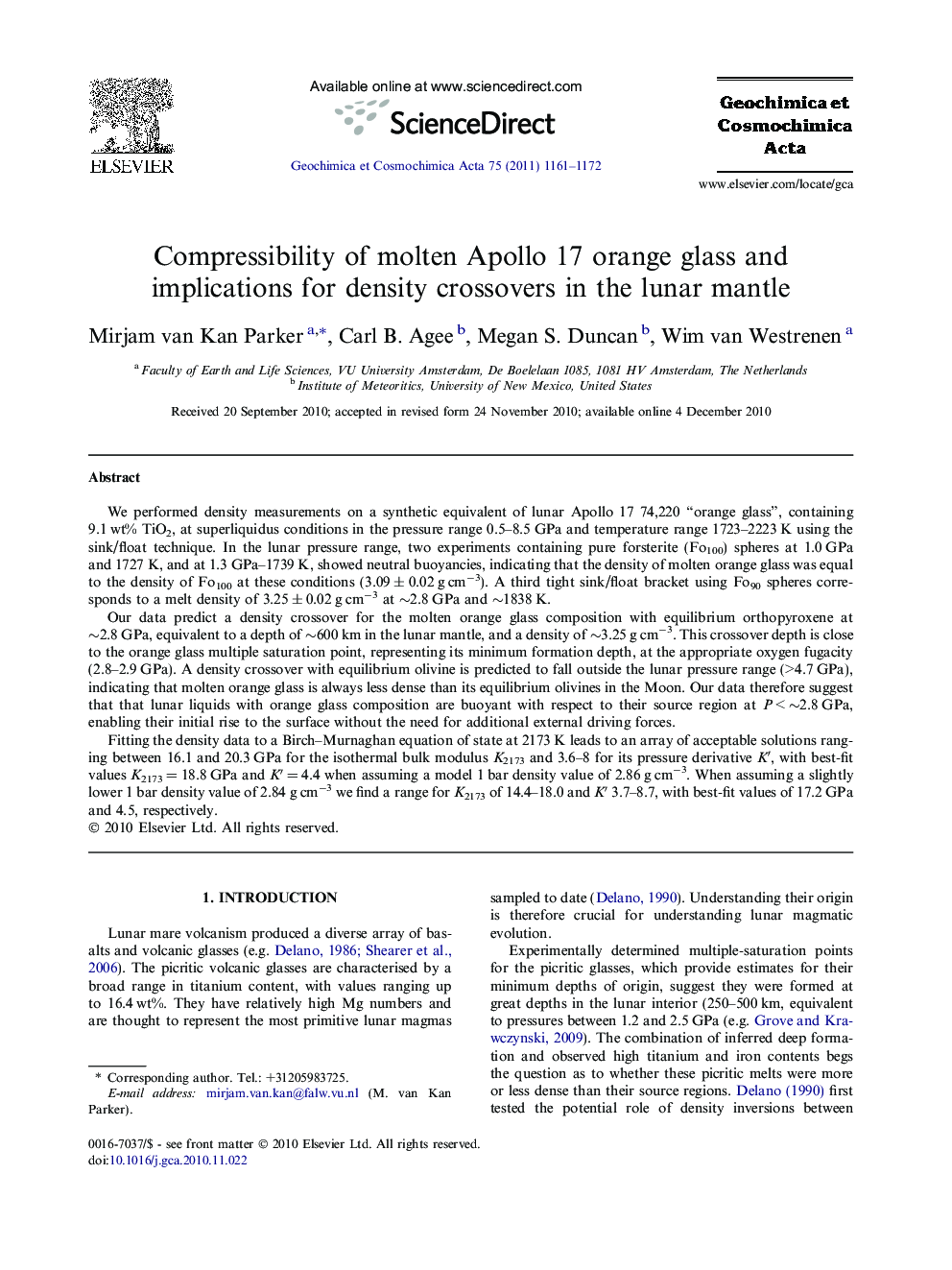| Article ID | Journal | Published Year | Pages | File Type |
|---|---|---|---|---|
| 4703450 | Geochimica et Cosmochimica Acta | 2011 | 12 Pages |
We performed density measurements on a synthetic equivalent of lunar Apollo 17 74,220 “orange glass”, containing 9.1 wt% TiO2, at superliquidus conditions in the pressure range 0.5–8.5 GPa and temperature range 1723–2223 K using the sink/float technique. In the lunar pressure range, two experiments containing pure forsterite (Fo100) spheres at 1.0 GPa and 1727 K, and at 1.3 GPa–1739 K, showed neutral buoyancies, indicating that the density of molten orange glass was equal to the density of Fo100 at these conditions (3.09 ± 0.02 g cm−3). A third tight sink/float bracket using Fo90 spheres corresponds to a melt density of 3.25 ± 0.02 g cm−3 at ∼2.8 GPa and ∼1838 K.Our data predict a density crossover for the molten orange glass composition with equilibrium orthopyroxene at ∼2.8 GPa, equivalent to a depth of ∼600 km in the lunar mantle, and a density of ∼3.25 g cm−3. This crossover depth is close to the orange glass multiple saturation point, representing its minimum formation depth, at the appropriate oxygen fugacity (2.8–2.9 GPa). A density crossover with equilibrium olivine is predicted to fall outside the lunar pressure range (>4.7 GPa), indicating that molten orange glass is always less dense than its equilibrium olivines in the Moon. Our data therefore suggest that that lunar liquids with orange glass composition are buoyant with respect to their source region at P < ∼2.8 GPa, enabling their initial rise to the surface without the need for additional external driving forces.Fitting the density data to a Birch–Murnaghan equation of state at 2173 K leads to an array of acceptable solutions ranging between 16.1 and 20.3 GPa for the isothermal bulk modulus K2173 and 3.6–8 for its pressure derivative K′, with best-fit values K2173 = 18.8 GPa and K′ = 4.4 when assuming a model 1 bar density value of 2.86 g cm−3. When assuming a slightly lower 1 bar density value of 2.84 g cm−3 we find a range for K2173 of 14.4–18.0 and K′ 3.7–8.7, with best-fit values of 17.2 GPa and 4.5, respectively.
